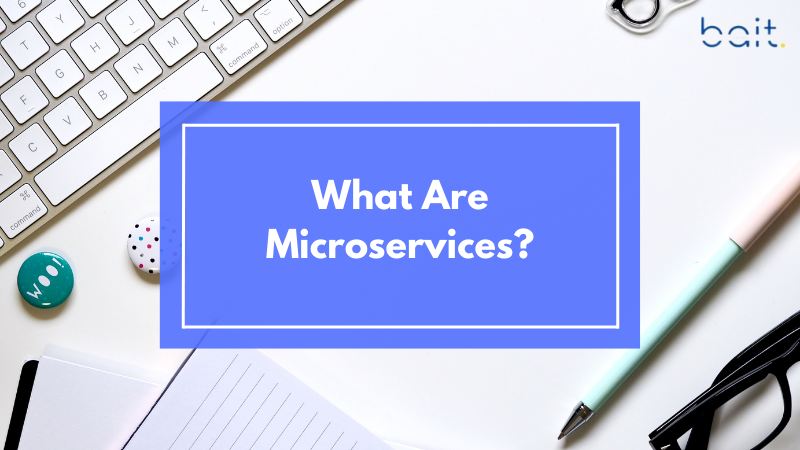TikTok, one of the world’s most popular social media platforms, has revolutionized the way we interact with short-form video content. Behind the captivating videos, catchy music, and viral trends lies a sophisticated technological backbone. A key aspect of TikTok’s Microservices infrastructure is its adoption of microservices architecture. This approach allows TikTok to scale, adapt, and deliver a seamless experience to millions of users globally. In this article, we will dive into TikTok’s use of microservices, its advantages, and how it powers the app’s success.
What Are Microservices?

Microservices refer to a software architectural style where an application is broken down into small, independent services that perform specific functions. Each service is a mini-application with its own database and logic, communicating with other services via APIs. This is in contrast to a monolithic architecture, where the entire application is built as a single unit.
For large-scale platforms like TikTok, microservices offer the flexibility to scale, maintain, and deploy applications efficiently. As TikTok serves millions of users with varying needs, microservices allow the app to evolve quickly without compromising performance.
Why TikTok Adopted Microservices
TikTok’s decision to adopt microservices stems from several factors, including the platform’s explosive growth, the need for high availability, and the complexity of its features. Here’s why microservices make sense for TikTok:
1. Scalability
TikTok has a massive global user base, which means it needs a backend infrastructure that can scale efficiently. Microservices allow TikTok to scale specific services individually without affecting the entire application. For example, the video upload service can be scaled separately from the user notification service, ensuring that the platform can handle millions of concurrent requests without slowing down.
2. Improved Fault Tolerance
By breaking the app into smaller, independent services, TikTok ensures that if one service fails, it doesn’t affect the entire platform. If the video playback service encounters an issue, it can be isolated and fixed without disrupting other parts of the app, such as the feed or comment sections. This approach increases the reliability of TikTok, providing users with uninterrupted service.
3. Faster Development and Deployment
With microservices, TikTok can accelerate its development cycle. Since each service is independent, developers can work on different services simultaneously, speeding up the overall process. Additionally, updates and new features can be deployed to specific services without the need for a full application redeployment, reducing downtime and allowing for faster iteration.
4. Easier Maintenance and Updates
Maintaining a monolithic application can be challenging as it grows in complexity. With microservices, each service is self-contained, making it easier to troubleshoot, test, and update. If TikTok wants to roll out new features or fix bugs, it can do so in one microservice without touching the entire system, reducing the risk of introducing new issues.
Key Features of TikTok’s Microservices Architecture
TikTok’s backend infrastructure is a sophisticated system of Tiktok microservices working in tandem. Here are some key features that make it work:
1. Video Processing Microservices
One of the most critical aspects of TikTok is video content. When a user uploads a video, TikTok’s backend handles multiple processes, including compression, thumbnail generation, and rendering. Each of these processes is managed by separate microservices that operate concurrently to ensure fast and efficient video processing.
2. Recommendation Engine Microservices
TikTok’s algorithm-driven recommendation system is at the core of its user experience. The platform uses microservices to handle the real-time analysis of user behavior, such as what videos they like, share, or comment on. These microservices continuously update the recommendation engine, ensuring that each user receives personalized content that keeps them engaged.
3. User Management Services
TikTok’s user management system handles a range of activities, from account creation and authentication to user profiles and privacy settings. Microservices break down these functions, making it easier for the platform to manage millions of user accounts and provide features such as secure logins, password resets, and notifications.
4. Content Moderation Microservices

TikTok places a significant emphasis on content moderation to ensure a safe environment for users. The platform uses AI-powered microservices to detect inappropriate content, including hate speech, violence, and explicit material. These services work in real-time to flag and remove offending content, providing a safer experience for TikTok’s vast user base.
How TikTok Benefits from Microservices
1. Enhanced Performance and Speed
Microservices allow TikTok to optimize its backend processes. Services can run on separate servers and scale independently, ensuring that the platform can handle a massive number of requests simultaneously. This approach contributes to the app’s lightning-fast performance, allowing users to browse videos without significant lag.
2. Global Availability
With users across different continents, TikTok needs a solution that ensures low latency. Microservices can be distributed across multiple data centers globally, ensuring that users experience minimal delays regardless of their location. The platform’s infrastructure can scale dynamically to meet the needs of users at any time, making TikTok one of the most reliable social media apps.
3. Cost Efficiency
Microservices help TikTok optimize its resource usage. Instead of running a large monolithic application on a few servers, TikTok can distribute workloads across multiple microservices and scale them independently. This results in better resource utilization and, ultimately, cost savings.
Conclusion
TikTok’s adoption of microservices has played a pivotal role in scaling the platform, improving its user experience, and ensuring smooth operations across the globe. As the app continues to grow and introduce new features, microservices will remain at the heart of its backend architecture. This approach provides the flexibility, scalability, and resilience needed to meet the demands of millions of users worldwide. As more apps embrace microservices, TikTok’s model could set a benchmark for future social media platforms and tech companies seeking to build scalable, efficient systems.
